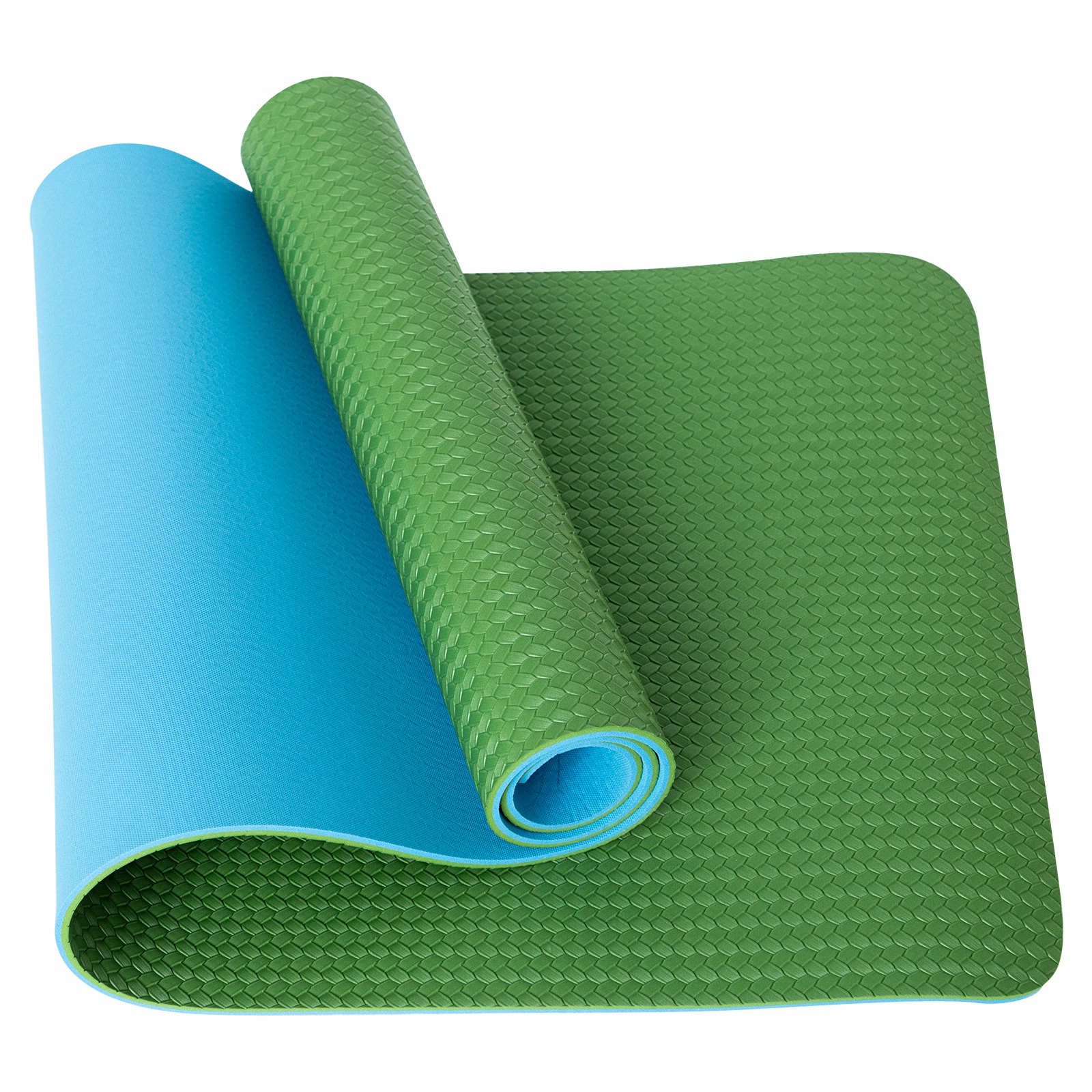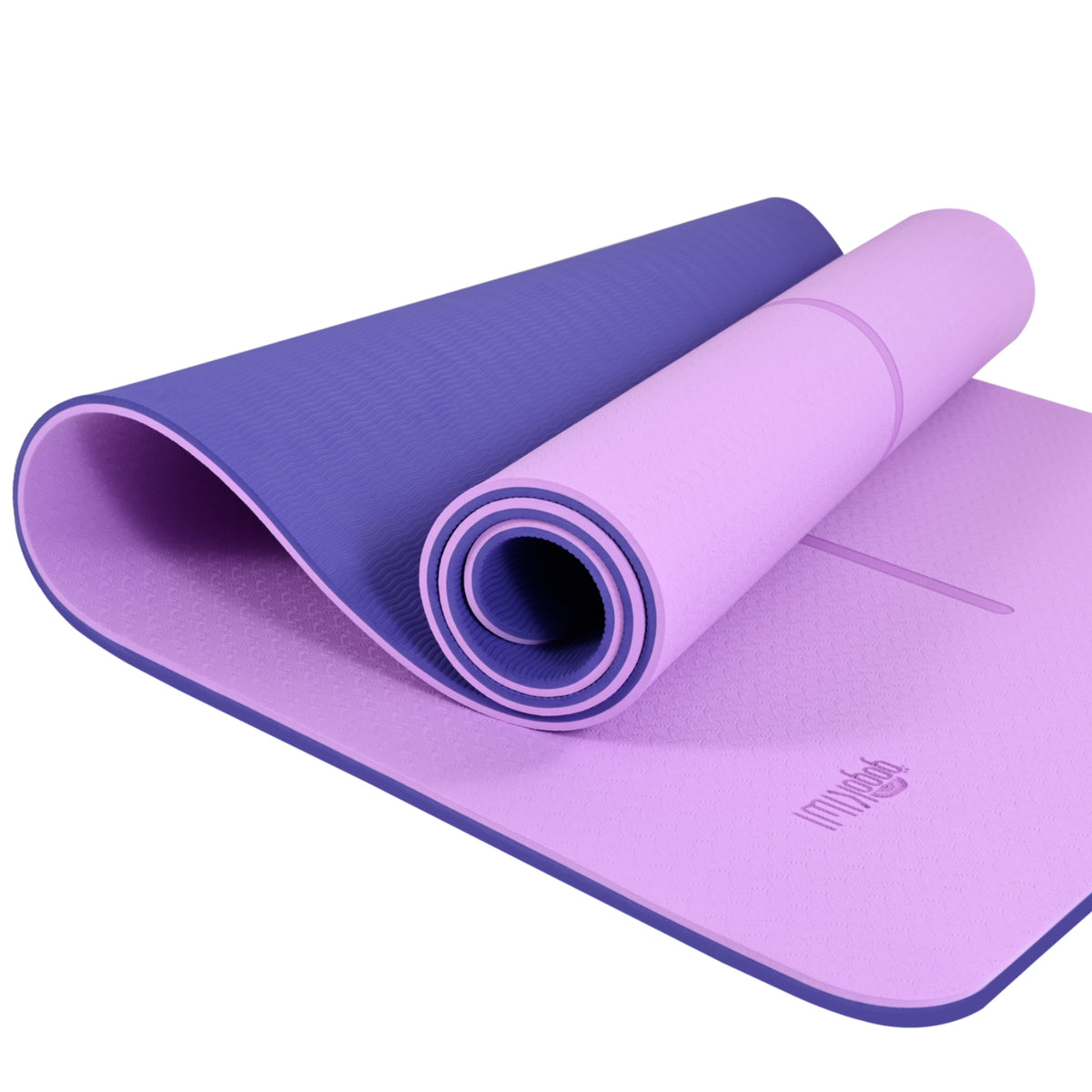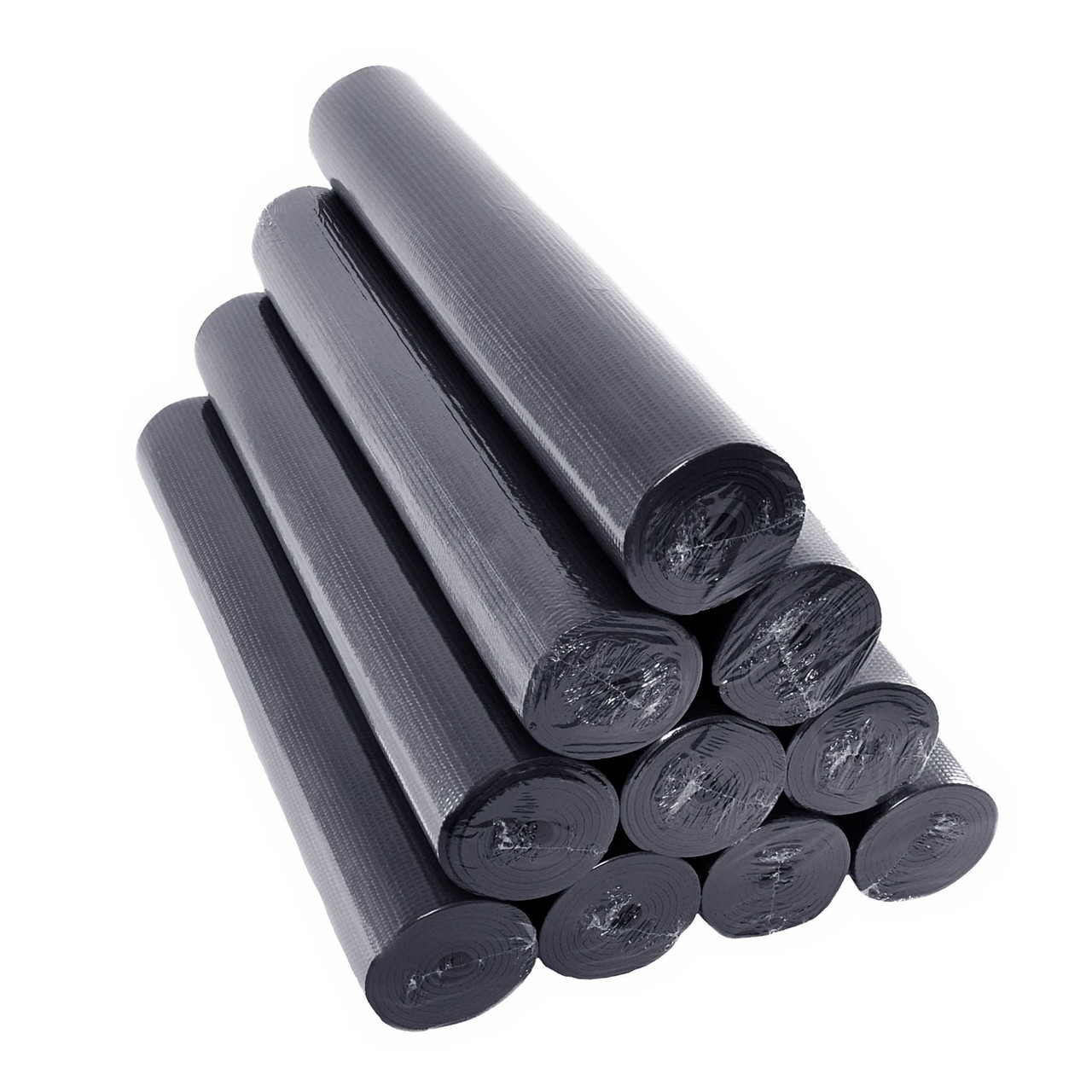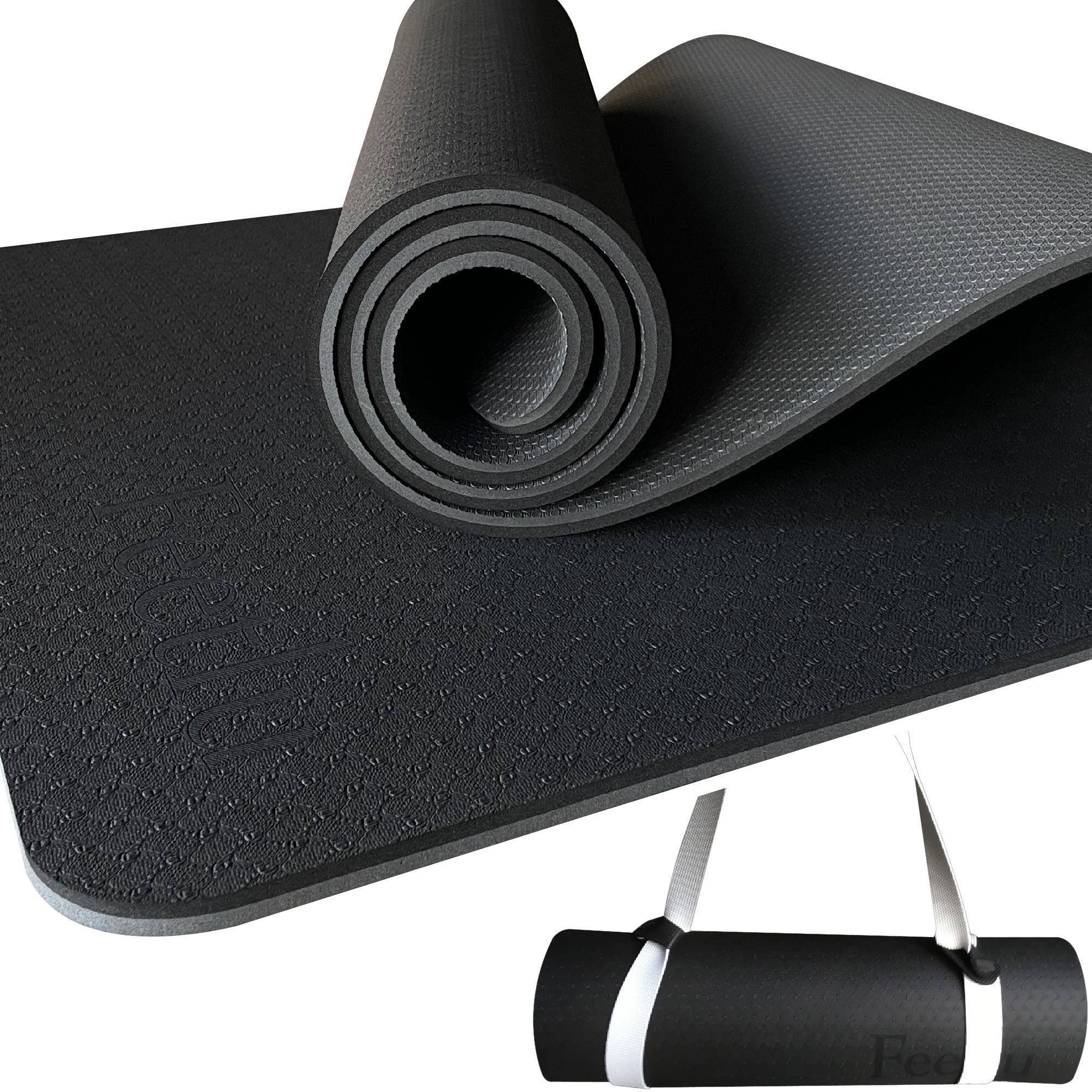How thick should yoga mat be? Yoga has been practiced for thousands of years, and it has become increasingly popular in recent years due to its numerous physical and mental benefits. Whether you are a seasoned yogi or just starting out, having the right equipment is crucial for a successful and comfortable practice. One of the most important pieces of equipment for any yoga practitioner is the yoga mat. When it comes to selecting the right yoga mat, thickness is an important factor to consider. In this article, we will explore the different thickness options available for yoga mats and help you choose the right thickness for your practice.

Understanding the Importance of Yoga Mat Thickness
The thickness of your yoga mat can significantly impact your practice. A thicker mat provides more cushioning and support for your joints, making it ideal for restorative and gentle styles of yoga. On the other hand, a thinner mat offers better stability and firm grounding, making it suitable for more active and dynamic styles of yoga. Choosing the right thickness for your yoga mat will enhance your overall practice and keep you comfortable as you flow through your poses.
The Standard Thickness for Yoga Mats
The standard thickness for most yoga mats ranges from 1/16 inch to 1/4 inch. A 1/16-inch mat is considered to be extra thin and lightweight, making it easy to travel with and suitable for practitioners who prioritize portability. On the other hand, a 1/4-inch mat is thicker and provides more cushioning, making it ideal for those who need extra support for their joints.
Factors to Consider When Choosing Yoga Mat Thickness
When choosing the right thickness for your yoga mat, it’s essential to consider several factors. Your body type, the type of yoga you practice, and any preexisting injuries or physical conditions are all important considerations. Additionally, your personal preference and comfort level will also play a significant role in determining the best thickness for your yoga mat.
Body Type
Your body type can impact how much support you need from your yoga mat. If you have a larger or heavier build, you may benefit from a thicker mat that provides more cushioning. Conversely, if you have a smaller frame, a thinner mat may provide sufficient support without feeling too spongy.
Type of Yoga Practice
The type of yoga you practice will also influence the ideal thickness for your yoga mat. If you primarily practice gentle or restorative yoga, a thicker mat may be more comfortable for longer-held poses and relaxation. For more dynamic and active styles of yoga, such as Ashtanga or Vinyasa, a thinner mat may offer better stability and traction.

Injuries or Physical Conditions
If you have any preexisting injuries or physical conditions, such as knee or back pain, choosing the right thickness for your yoga mat becomes even more critical. A thicker mat can help alleviate pressure on sensitive joints, while a thinner mat can provide better grounding and stability for those with balance or mobility issues.
Personal Preference and Comfort Level
Ultimately, your personal preference and comfort level should guide your decision when choosing the right thickness for your yoga mat. It’s essential to consider how the thickness of the mat feels on your body and whether it enhances or detracts from your practice.
Finding the Right Balance
Finding the right balance between cushioning and stability is key when selecting the thickness of your yoga mat. A mat that is too thin may not provide enough support for your body, while a mat that is too thick may feel unstable and make it challenging to maintain proper alignment in your poses. It’s crucial to find a thickness that offers both comfort and stability for your individual needs.
How to use a yoga mat
Yoga is an ancient practice that has been around for thousands of years. It is known for its physical, mental, and spiritual benefits. One essential tool for practicing yoga is a yoga mat. A yoga mat provides a non-slip surface for yoga poses, cushioning for the body, and helps define your personal space in a crowded class.
Choosing the Right Yoga Mat
Before we delve into the use of a yoga mat, it’s important to start with choosing the right one for you. There are a variety of yoga mats available on the market, ranging from thin and lightweight to thick and cushioned. Consider the type of yoga you practice and your specific needs when selecting a mat. If you practice gentle, restorative yoga, you may prefer a thicker, more cushioned mat. If you practice hot yoga, you may want a mat that has a non-slip surface and is easily washable. It’s also important to consider the material of the mat, as some are eco-friendly and biodegradable, while others may be more durable or have extra grip.

Laying Out Your Yoga Mat
Once you have selected the right yoga mat, it’s time to lay it out for your practice. Find a flat and clean surface to lay your mat down. Start by unrolling the mat flat on the ground, ensuring that it is even on both sides. If you are in a class, be mindful of the space around you and position yourself so that you have enough room to stretch out without encroaching on others. Take a moment to smooth out any wrinkles or folds in the mat to prevent tripping or slipping during your practice.
Using Proper Alignment
One of the key benefits of a yoga mat is its ability to help with proper alignment during yoga poses. The lines and markings on many yoga mats can act as a guide for proper body placement and alignment. When practicing poses such as Warrior I or Downward-Facing Dog, use the lines on the mat to ensure that your feet are parallel and evenly spaced. This will help you maintain proper posture and prevent injury during your practice. Paying attention to proper alignment is essential to getting the full benefits of each pose and improving your overall practice.
Maintaining Your Yoga Mat
Maintaining your yoga mat is essential for both hygiene and longevity. After each practice, take a moment to wipe down your mat with a mild soap and water solution to remove any sweat, dirt, or oils. For a deeper clean, use a gentle yoga mat cleaner or a vinegar and water solution. Allow your mat to air dry completely before rolling it up for storage. Regular cleaning will prevent the buildup of bacteria and odors on the mat, as well as extend its lifespan. Additionally, when storing your mat, avoid leaving it in direct sunlight or extreme temperatures, as this can cause the material to deteriorate over time.
Using Props with Your Yoga Mat
In addition to using your yoga mat for traditional yoga poses, it can also be used in conjunction with yoga props to enhance your practice. For example, if you are working on balance poses, placing a yoga block on your mat can provide added stability. If you are practicing yoga for relaxation and meditation, using a bolster or blanket on your mat can provide extra comfort and support. Whether you are a beginner or an advanced practitioner, incorporating props can help you deepen your practice and explore new aspects of your yoga journey.

Conclusion
Choosing the right thickness for your yoga mat is an important decision that can significantly impact the quality of your practice. By considering factors such as your body type, the type of yoga you practice, and any preexisting injuries or physical conditions, you can find the ideal thickness that meets your specific needs. Whether you opt for a thinner mat for improved stability or a thicker mat for enhanced cushioning, finding the right balance will ensure a comfortable and supportive practice that allows you to focus on the physical and mental benefits of yoga.
